-
 Thanh toán đa dạng, linh hoạtChuyển khoản ngân hàng, thanh toán tại nhà...
Thanh toán đa dạng, linh hoạtChuyển khoản ngân hàng, thanh toán tại nhà... -
 Miễn Phí vận chuyển 53 tỉnh thànhMiễn phí vận chuyển đối với đơn hàng trên 1 triệu
Miễn Phí vận chuyển 53 tỉnh thànhMiễn phí vận chuyển đối với đơn hàng trên 1 triệu -
 Yên Tâm mua sắmHoàn tiền trong vòng 7 ngày...
Yên Tâm mua sắmHoàn tiền trong vòng 7 ngày...

- ASIN:1119066476
- Publisher:Wiley-Blackwell; 2nd edition (March 6, 2017)
- Language:English
- Paperback:384 pages
- ISBN-10:9781119066477
- ISBN-13:978-1119066477
- Item Weight:1.35 pounds
- Dimensions:6 x 0.8 x 9 inches
- Best Sellers Rank:#959,774 in Books (See Top 100 in Books) #145 in Cardiology (Books) #656 in Cardiovascular Diseases (Books)
- Customer Reviews:4.7 out of 5 stars 35Reviews
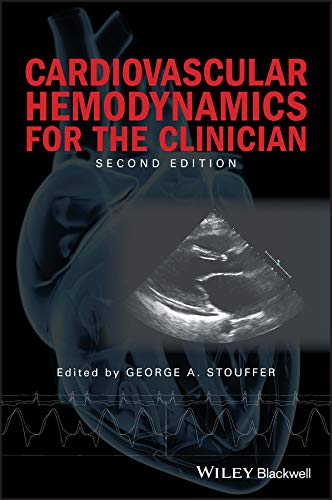
Tính năng sản phẩm
• Highlight, take notes, and search in the book• In this edition, page numbers are just like the physical editionMô tả sản phẩm
Product Description
Cardiovascular Hemodynamics for the Clinician, 2nd Edition, provides a useful, succinct and understandable guide to the practical application of hemodynamics in clinical medicine for all trainees and clinicians in the field.
- Concise handbook to help both practicing and prospective clinicians better understand and interpret the hemodynamic data used to make specific diagnoses and monitor ongoing therapy
- Numerous pressure tracings throughout the book reinforce the text by demonstrating what will be seen in daily practice
- Topics include coronary artery disease; cardiomyopathies; valvular heart disease; arrhythmias; hemodynamic support devices and pericardial disease
- New chapters on TAVR, ventricular assist devices, and pulmonic valve disease, expanded coverage of pulmonary hypertension, fractional flow reserve, heart failure with preserved ejection fraction and valvular heart disease
- Provides a basic overview of circulatory physiology and cardiac function followed by detailed discussion of pathophysiological changes in various disease states
From the Inside Flap
CARDIOVASCULAR HEMODYNAMICS FOR THE CLINICIAN
SECOND EDITION
Cardiovascular Hemodynamics for the Clinician, second edition, provides a useful, succinct, and understandable guide to the practical application of hemodynamics in clinical medicine for all trainees and clinicians in the field.
The book opens with a basic overview of circulatory physiology and cardiac function, followed by a detailed discussion of pathophysiologic changes in various disease states. The first section reviews the principles that are necessary for an understanding of hemodynamics in clinical practice:
- A description of the basic formulas necessary to understand hemodynamics
- Discussion of the nuts and bolts of right heart catheterization (including intracardiac shunt detection and cardiac output)
- An overview of normal hemodynamics
- Primers on interpreting arterial pressure tracings, atrial pressure tracings, and cardiac output measurements
The remainder of the book is divided into sections on various clinical entities, including valvular heart disease, cardiomyopathies, pericardial disease, coronary hemodynamics and fractional flow reserve, mechanical support devices (e.g., intra-aortic balloon counterpulsation, ventricular assist devices), arrhythmias, and cardiac pacing. These chapters aid the clinician in interpreting hemodynamic data in various disease states and include numerous pressure tracings. New chapters cover TAVR, ventricular assist devices, and pulmonic valve disease, and the author expands the treatment of pulmonary hypertension, fractional flow reserve, heart failure with preserved ejection fraction, and valvular heart disease.
By presenting clinically useful information in a disease-based framework, this concise reference is an essential resource for clinicians who need to extract maximum information from pressure and blood flow in patients with cardiovascular disease.
From the Back Cover
CARDIOVASCULAR HEMODYNAMICS FOR THE CLINICIAN
SECOND EDITION
Cardiovascular Hemodynamics for the Clinician, second edition, provides a useful, succinct, and understandable guide to the practical application of hemodynamics in clinical medicine for all trainees and clinicians in the field.
The book opens with a basic overview of circulatory physiology and cardiac function, followed by a detailed discussion of pathophysiologic changes in various disease states. The first section reviews the principles that are necessary for an understanding of hemodynamics in clinical practice:
- A description of the basic formulas necessary to understand hemodynamics
- Discussion of the nuts and bolts of right heart catheterization (including intracardiac shunt detection and cardiac output)
- An overview of normal hemodynamics
- Primers on interpreting arterial pressure tracings, atrial pressure tracings, and cardiac output measurements
The remainder of the book is divided into sections on various clinical entities, including valvular heart disease, cardiomyopathies, pericardial disease, coronary hemodynamics and fractional flow reserve, mechanical support devices (e.g., intra-aortic balloon counterpulsation, ventricular assist devices), arrhythmias, and cardiac pacing. These chapters aid the clinician in interpreting hemodynamic data in various disease states and include numerous pressure tracings. New chapters cover TAVR, ventricular assist devices, and pulmonic valve disease, and the author expands the treatment of pulmonary hypertension, fractional flow reserve, heart failure with preserved ejection fraction, and valvular heart disease.
By presenting clinically useful information in a disease-based framework, this concise reference is an essential resource for clinicians who need to extract maximum information from pressure and blood flow in patients with cardiovascular disease.
About the Author
George A. Stouffer, MD. is Chief of Cardiology and the Henry A. Foscue Distinguished Professor of Medicine at the University of North Carolina. He served as Director of the Cardiac Catheterization Laboratories and Director of Interventional Cardiology for 14 years before assuming his current role. He has published three textbooks and more than 120 articles, including several dealing with the hemodynamics of heart disease.
- Mua astaxanthin uống có tốt không? Mua ở đâu? 29/10/2018
- Saffron (nhụy hoa nghệ tây) uống như thế nào cho hợp lý? 29/09/2018
- Saffron (nghệ tây) làm đẹp như thế nào? 28/09/2018
- Giải đáp những thắc mắc về viên uống sinh lý Fuji Sumo 14/09/2018
- Công dụng tuyệt vời từ tinh chất tỏi với sức khỏe 12/09/2018
- Mua collagen 82X chính hãng ở đâu? 26/07/2018
- NueGlow mua ở đâu giá chính hãng bao nhiêu? 04/07/2018
- Fucoidan Chính hãng Nhật Bản giá bao nhiêu? 18/05/2018
- Top 5 loại thuốc trị sẹo tốt nhất, hiệu quả với cả sẹo lâu năm 20/03/2018
- Footer chi tiết bài viết 09/03/2018
- Mã vạch không thể phân biệt hàng chính hãng hay hàng giả 10/05/2023
- Thuốc trắng da Ivory Caps chính hãng giá bao nhiêu? Mua ở đâu? 08/12/2022
- Nên thoa kem trắng da body vào lúc nào để đạt hiệu quả cao? 07/12/2022
- Tiêm trắng da toàn thân giá bao nhiêu? Có an toàn không? 06/12/2022
- Top 3 kem dưỡng trắng da được ưa chuộng nhất hiện nay 05/12/2022
- Uống vitamin C có trắng da không? Nên uống như thế nào? 03/12/2022
- [email protected]
- Hotline: 0909977247
- Hotline: 0908897041
- 8h - 17h Từ Thứ 2 - Thứ 7
Đăng ký nhận thông tin qua email để nhận được hàng triệu ưu đãi từ Muathuoctot.com
Tạp chí sức khỏe làm đẹp, Kem chống nắng nào tốt nhất hiện nay Thuoc giam can an toan hiện nay, thuoc collagen, thuoc Dong trung ha thao , thuoc giam can LIC, thuoc shark cartilage thuoc collagen youtheory dau ca omega 3 tot nhat, dong trung ha thao aloha cua my, kem tri seo hieu qua, C ollagen shiseido enriched, và collagen shiseido dạng viên , Collagen de happy ngăn chặn quá trình lão hóa, mua hang tren thuoc virility pills vp-rx tri roi loan cuong duong, vitamin e 400, dieu tri bang thuoc fucoidan, kem chống nhăn vùng mắt, dịch vụ giao hang nhanh nội thành, crest 3d white, fine pure collagen, nên mua collagen shiseido ở đâu, làm sáng mắt, dịch vụ cho thue kho lẻ tại tphcm, thực phẩm tăng cường sinh lý nam, thuoc prenatal bổ sung dinh dưỡng, kem đánh răng crest 3d white, hỗ trợ điều trị tim mạch, thuốc trắng da hiệu quả giúp phục hồi da. thuốc mọc tóc biotin








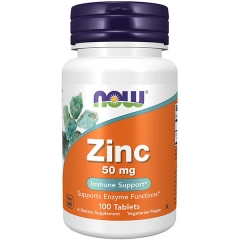
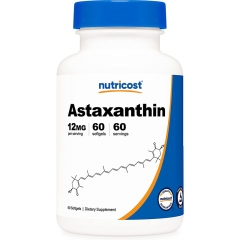

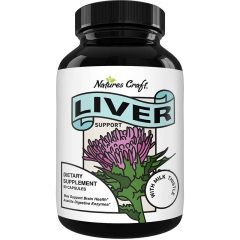





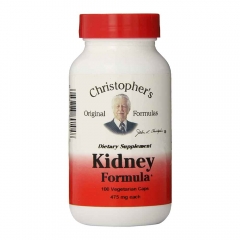

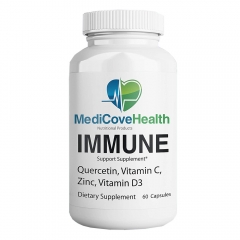




 KHUYẾN MÃI LỚN
KHUYẾN MÃI LỚN Hỗ Trợ Xương Khớp
Hỗ Trợ Xương Khớp Bổ Não & Tăng cường Trí Nhớ
Bổ Não & Tăng cường Trí Nhớ Bổ Sung Collagen & Làm Đẹp
Bổ Sung Collagen & Làm Đẹp Bổ Thận, Mát Gan & Giải Độc
Bổ Thận, Mát Gan & Giải Độc Chăm Sóc Sức khỏe Nam Giới
Chăm Sóc Sức khỏe Nam Giới Chăm Sóc Sức khỏe Nữ Giới
Chăm Sóc Sức khỏe Nữ Giới Chăm sóc Sức khỏe Trẻ Em
Chăm sóc Sức khỏe Trẻ Em Thực Phẩm Giảm Cân, Ăn Kiêng
Thực Phẩm Giảm Cân, Ăn Kiêng Bổ Sung Vitamin & Khoáng Chất
Bổ Sung Vitamin & Khoáng Chất Bổ Tim Mạch, Huyết Áp & Mỡ Máu
Bổ Tim Mạch, Huyết Áp & Mỡ Máu Bổ Mắt & Tăng cường Thị lực
Bổ Mắt & Tăng cường Thị lực Điều Trị Tai Mũi Họng
Điều Trị Tai Mũi Họng Sức Khỏe Hệ Tiêu hóa
Sức Khỏe Hệ Tiêu hóa Chăm Sóc Răng Miệng
Chăm Sóc Răng Miệng Chống Oxy Hóa & Tảo Biển.
Chống Oxy Hóa & Tảo Biển.